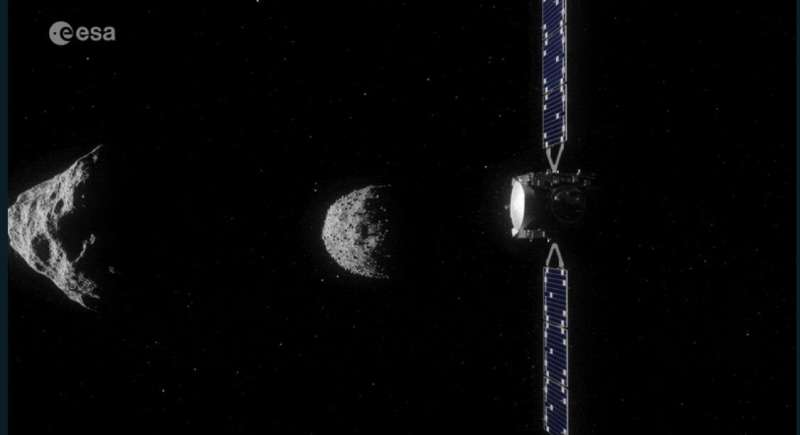So this is going to be another extremely busy year, but at the end of it we aim to be well on track for launch."
The ESTEC Test Center is the largest satellite test facility in Europe, equipped with facilities to simulate every aspect of the launch and space environment. Hera's spacecraft-level test campaign is forecast to begin in the autumn.
Hera will be equipped with automated guidance, navigation and control to allow it to safely navigate the double-asteroid system, akin in function to a self-driving car. Its desk-sized body will carry instruments including an optical Asteroid Framing Camera, supplemented by thermal and spectral imagers, as well as a laser altimeter for surface mapping. Hera is also three spacecraft in one, because it will also deliver a pair of shoebox-sized CubeSats to the vicinity of Dimorphos.
The Juventas CubeSat will perform the first ever radar probe of an asteroid interior, while also carrying a gravimeter and accelerometer to measure the body's ultra-low gravity and surface mechanical response. The other CubeSat, Milani—named after the mission's original inventor—will perform near-infrared spectral imaging and sample asteroid dust.
The CubeSat pair will remain in contact with their Hera mothership and each other through a novel inter-satellite link system, to build up experience of overseeing multiple spacecraft in exotic near-weightlessness, before eventually touching down on Dimorphos.
NASA's DART and ESA's Hera missions have been supported by the same international teams of scientists and astronomers, and take place through an international collaboration called AIDA—the Asteroid Impact and Deflection Assessment. Planetary defense has no borders and is a great example of what international collaboration can achieve.
Provided by European Space Agency



